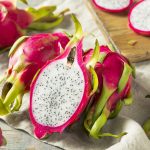Don’t fear this “dragon!” Discover the outstanding health benefits of dragon fruit
 (NaturalHealth365) There’s no denying it – the appearance of dragon fruit can be a little off-putting. This unusual-looking fruit is sheathed in thick, reptilian-looking scales tinged with a fiery-looking pinkish-red. Never fear, though. Like the artichoke – which it somewhat resembles – the dragon fruit is hiding a delicious taste under its armored skin.
(NaturalHealth365) There’s no denying it – the appearance of dragon fruit can be a little off-putting. This unusual-looking fruit is sheathed in thick, reptilian-looking scales tinged with a fiery-looking pinkish-red. Never fear, though. Like the artichoke – which it somewhat resembles – the dragon fruit is hiding a delicious taste under its armored skin.
Scientists report that dragon fruit has health benefits to spare. In a new review published in Natural Product Reports, researchers credited antioxidants in dragon fruit with neuroprotective and cardioprotective properties. The possible benefits of dragon fruit include promoting the health of the heart and brain. So let’s see exactly why some nutritionists are hailing dragon fruit as a new “super-fruit.”
Benefits of dragon fruit include supporting a healthy heart and circulatory system
When it comes to supporting a healthy heart, dragon fruit is the “real deal.”
A mere 100 grams (about 3.5 ounces) of dragon fruit provides 10 percent of the recommended dietary allowance for magnesium, a mineral that can help promote healthy blood pressure. In addition, with a substantial seven grams of fiber per cup, dragon fruit may also help with weight control. And, when it comes to iron – a mineral needed to transport oxygen in the blood – dragon fruit offers a “twofer.” Not only does it contribute healthy amounts of iron, but it contains vitamin C, which helps with absorption.
Finally, dragon fruit is rich in lycopene, which Cleveland Clinic says may reduce harmful LDL cholesterol while increasing desirable HDL. In a 2018 review titled “Lycopene and Vascular Health,” published in Frontiers in Pharmacology, scientists reported that lycopene could help keep arteries flexible, promoting cardiovascular health. (Pro tip: no need to avoid the tiny, edible black seeds in dragon fruit, which offer up heart-healthy omega-3 fatty acids).
Benefits of dragon fruit may include improved cognition
The real key to dragon fruit’s health benefits may be its high level of antioxidant compounds, which scavenge harmful free radicals that can cause oxidative stress to tissues and cells. Dragon fruit is rich in a mighty group of antioxidant, anti-inflammatory plant pigments known as betacyanins. (In fact, a type of betacyanin called betalin helps to give super-healthy beets their antioxidant “kick.”)
In addition, when scientists compared the antioxidant activity of betacyanins to other natural “good guy” compounds such as catechins (found in green tea) and beta-carotene (found in carrots), they discovered that betacyanins had the strongest effect. The authors of the NPR review reported that betacyanins improve cognitive function, so dragon fruit could be an excellent food to snack on if you are looking to sharpen your mental focus and clarity.
Dragon fruit may even help brighten mood
In addition, dragon fruit contains prebiotic fiber, which provides fuel for beneficial bacteria in the gut microbiome, or community of bacteria in the gastrointestinal tract. The all-important gut microbiome is strongly linked with the health of the immune system and also influences mood and cognition.
Therefore, eating foods such as dragon fruit that encourage a balanced microbiome may help support a calmer, brighter mood.
Enjoy the benefits of dragon fruit chilled or grilled
Given its spiny appearance, it’s not surprising that dragon fruit grows on a cactus – specifically, the Hylocereus cactus, or “Honolulu queen.” Also known as pitaya and strawberry pear, dragon fruit features a crunchy texture and a taste reminiscent of tangy oranges and sweet pears.
Dragon fruits are available in several varieties, including the Guyute (which has pink skin and white flesh), the Red Jaina (red skin and flesh), and the “American Beauty” (with purple flesh.) Yellow dragon fruit, with yellow skin and white pulp, is the sweetest type but is not as commonly available.
Dragon fruit should be firm to the touch but should “give” slightly when squeezed. Easy-to-prepare dragon fruit may be sliced in half (discard the scaly, inedible skin) and then eaten with a spoon. Or, slice peeled dragon fruit and enjoy it in fruit salads with other tropical delights such as kiwi fruit, pineapples, mangoes, and starfruit.
You can also stir dragon fruit into yogurt, use it to top oatmeal or blend it into your favorite smoothie or juice. If you really want to get creative with dragon fruit, you can grill it with a dash of chili pepper or paprika. Or, add a bit of honey and then freeze for a dragon fruit popsicle.
While admittedly “scary-looking,” dragon fruit is actually a non-scary – and refreshing – addition to your healthy diet.
Sources for this article include:



